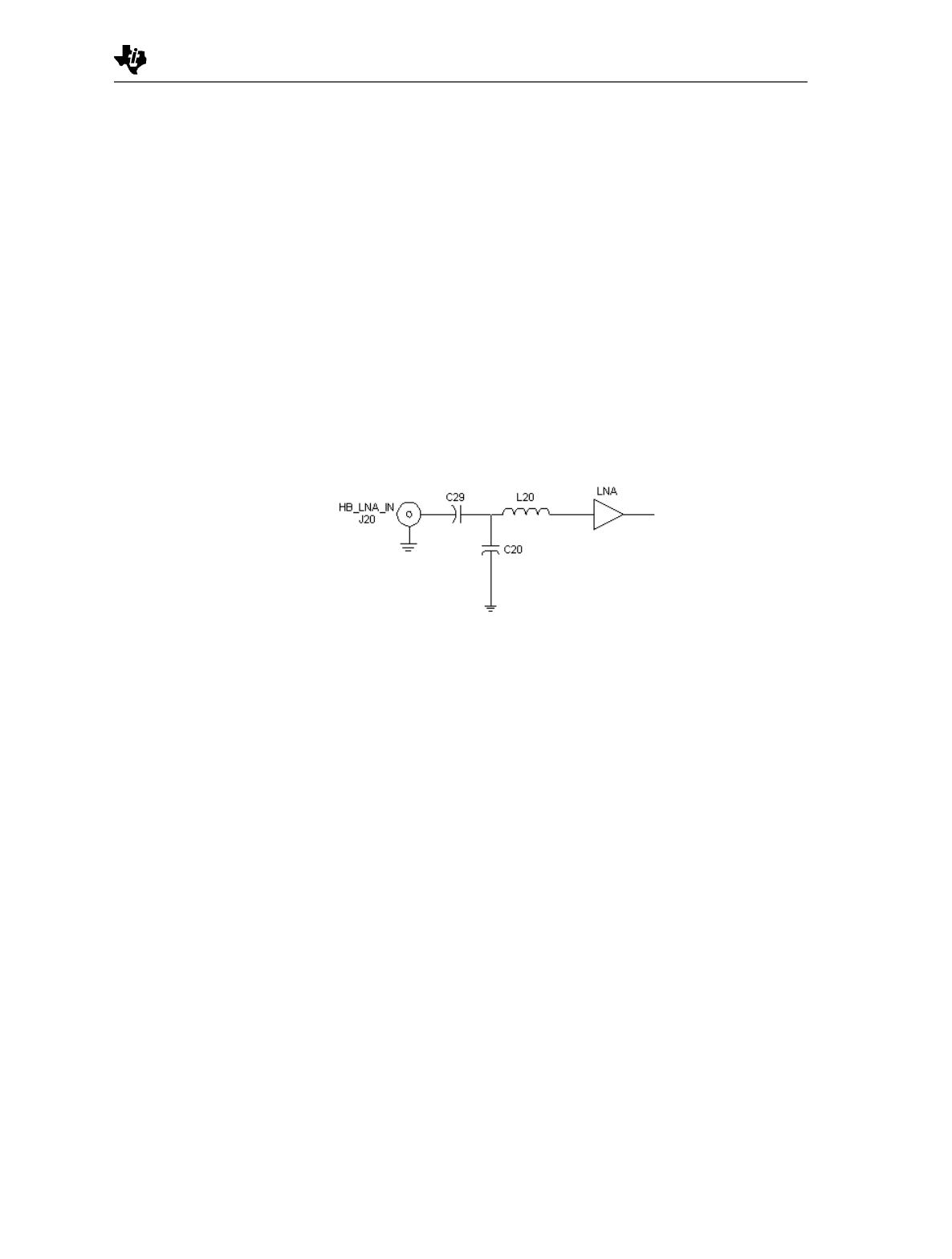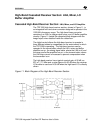
SWRA004A
36 TRF1500 Integrated Dual-Band RF Receiver User’s Guide
High-Band RF Input
Figure 12 details the high-band RF input configuration. The
cascaded noise figure and input return loss performance of the
high-band receiver section is determined primarily by the input
matching network. The input matching network is designed for
optimum noise figure performance, while maintaining good input
return loss. A low-pass shunt-C (C20) series-L (L20) network is
used for the input impedance matching. The series capacitor
(C29) on the input port is used for dc blocking purposes. The end-
user can optimize the input matching network for better input
return loss but obtaining a better input match may degrade the
overall cascaded noise figure performance.
Figure 12. High-Band RF Input Configuration
High-Band LO Input
The high-band LO signal is fed through a buffer amplifier into a
differential quadrature generator, which is realized using a
polyphase network. The signals generated by the polyphase
network are used to drive two mixers which are injected with a
common RF signal. The IF signals out of these mixers will have a
180
°
phase shift of the image frequency as compared to the
wanted RF frequency. As a result of this 180
°
phase shift, the IF
signals at the image frequency will cancel in the quadrature
combiner. The IF signal at the desired frequency will add in the
quadrature combiner.
The TRF1500 offers several methods for providing high-band LO
drive. The high-band LO terminal may be directly driven either
single-ended or differentially. Alternately, the high-band LO
terminal may be driven by using the low-band LO output and the
integrated frequency doubler.


















